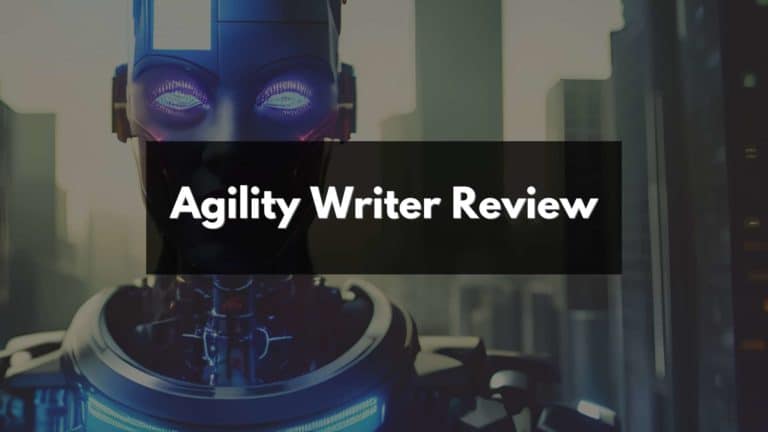Can NovelAI Pass Turnitin Detection?
Are you wondering if the content generated by NovelAI can bypass Turnitin’s advanced plagiarism check? Well, you’re not alone! Countless writers are questioning whether AI-driven text is detectable.
This blog will delve into both how Turnitin detects AI writing and the potential capability of NovelAI to pass this detection. Intrigued? Let’s explore!
What is AI Writing Detection and How Does Turnitin’s Model Work?
AI Writing Detection is a system used to identify and flag content that has been generated by artificial intelligence, such as ChatGpt or Jervis. Turnitin’s model works by training on a large dataset of existing texts and analyzing various parameters like text similarity, structure, and word usage to detect potential instances of plagiarism.
It supports multiple languages but may face limitations when it comes to non-English papers.
Overview of AI detection
AI detection refers to the process where advanced machine learning algorithms identify text produced by artificial intelligence. This technology learns to recognize patterns in AI-written texts that distinguish them from those written by humans.
Once trained, these systems can handle large amounts of data swiftly and accurately, a key advantage in many sectors like academia and publishing where content originality is paramount.
A classic example of AI detection software is Turnitin, which has broadened its plagiarism-detection mission to sniff out works generated by AI tools such as ChatGpt, Jervis or Jasper.
Their sophisticated model provides an indicator of possible AI-generated text with impressive accuracy rates reaching up to 99%, according to Originality AI. Regardless of language barriers, these programs still perform efficiently since they can also manage non-English papers effectively through some technical adjustment processes.
How the model is trained and runs
The AI detection model used by Turnitin is trained through a process that involves analyzing large amounts of text to develop an understanding of language patterns and potential instances of plagiarism.
This training allows the model to identify similarities between submitted papers and existing sources, flagging them for further investigation. The model runs by comparing the submitted paper against a vast database of academic content, including published articles, websites, and previously submitted papers.
It takes into account parameters such as word choice, sentence structure, and overall content similarity to determine the likelihood of plagiarism. While Turnitin’s effectiveness in detecting AI-generated text remains debated, it continues to refine its detection methods to keep up with advancements in technology.
Parameters taken into account
Turnitin’s AI writing detection takes several important parameters into account:
- Text Similarity: The system compares the submitted text with a vast database to identify any matches or similarities.
- Content Originality: Turnitin analyzes the uniqueness and originality of the text by checking against its extensive collection of academic materials.
- Plagiarism Checkers: Turnitin utilizes advanced algorithms to detect potential instances of plagiarism, comparing the submitted text with existing sources.
- Duplicate Content: The system identifies any sections of the text that might be duplicated from other sources, ensuring academic integrity.
- Intellectual Property: Turnitin helps protect intellectual property by identifying content that may infringe copyright laws.
Languages supported and what happens when a non-English paper is submitted
Turnitin’s AI Writing Detection supports multiple languages, ensuring that it can analyze and identify plagiarism in papers written in languages other than English. When a non-English paper is submitted, Turnitin’s model is equipped to handle the different language structures and nuances.
It uses advanced algorithms to compare the submitted text with its extensive database of sources, searching for any matches or similarities that indicate potential plagiarism. This means that regardless of the language used, Turnitin is capable of detecting instances of unoriginal content and maintaining academic integrity across various languages.
Benefits of Turnitin’s AI Writing Detection
Improved accuracy of detection, self-cleaning system, smartphone monitoring, and increased efficiency. Discover how Turnitin’s AI Writing Detection can benefit you!
Improved accuracy of detection
Turnitin’s AI Writing Detection offers improved accuracy when it comes to detecting plagiarism. By analyzing various parameters and comparing text samples, Turnitin can identify similarities and flag possible instances of copied content.
This advanced technology ensures that writers can trust the system to catch any potential issues with their work, maintaining academic integrity and originality. With high accuracy levels, Turnitin provides a reliable tool for educators and students alike in promoting honest writing practices.
While no detection system is foolproof, Turnitin constantly updates its algorithms to enhance its ability to spot plagiarized content accurately. Through ongoing research and development efforts, it strives to stay ahead of the ever-evolving techniques used by individuals attempting to bypass plagiarism checkers.
Self-cleaning system
NovelAI features a self-cleaning system that helps maintain the integrity and originality of its generated content. This means that any text produced by NovelAI goes through a rigorous process to ensure it is unique and not flagged as plagiarized by AI detection systems like Turnitin.
With this self-cleaning mechanism, writers can have peace of mind that their work will pass AI detection without compromising on quality or authenticity.
Smartphone monitoring
NovelAI does not currently offer smartphone monitoring as part of its AI writing platform. While NovelAI allows users to generate content using artificial intelligence, it does not provide the capability to monitor smartphones for plagiarism or other forms of academic dishonesty.
This means that if you are looking for an AI content writer that can pass AI detection and also offers smartphone monitoring, you may need to explore other options or platforms. It’s important to consider your specific needs and requirements when choosing an AI writing tool to ensure it aligns with your goals for maintaining academic integrity and preventing plagiarism.
Increased efficiency
Turnitin’s AI Writing Detection offers increased efficiency when it comes to detecting plagiarism. By using advanced algorithms and machine learning techniques, Turnitin can quickly analyze large amounts of text and compare them to its extensive database of sources, ensuring a faster turnaround time for detection results.
This allows writers who are looking for an AI content writer that can pass AI detection to streamline their writing process and receive prompt feedback on the originality of their work.
With increased efficiency, Turnitin helps maintain academic integrity and ensures that writers have the necessary tools to produce authentic content.
Results and Interpretation
The section on “Results and Interpretation” will provide an overview of the AI detection results, discussing the accuracy of the indicator, different indicators used, and addressing any false positives that may occur.
Overview of AI detection results
Turnitin’s AI Writing Detection has shown promising results in detecting plagiarism and identifying text generated by AI models like ChatGPT. According to Originality AI, their detection of ChatGPT-generated content is 99% accurate.
However, it is still unclear whether or not Turnitin can detect content generated by NovelAI or other AI writing platforms. Users may attempt to bypass Turnitin’s detection by using AI-generated content from platforms like NovelAI or utilizing other undetectable AI models such as ChatGPT, Jervis, or Jasper.
The effectiveness of Turnitin and other plagiarism checkers in detecting AI-generated text continues to be a topic of ongoing research and discussion.
Accuracy of the indicator
Turnitin’s AI Writing Detection system is known for its improved accuracy in detecting plagiarism. When it comes to AI-generated content, Turnitin is capable of identifying text produced by models like ChatGPT, Jervis, and Jasper.
In fact, according to Originality AI, the detection of ChatGPT-generated text has an impressive 99% accuracy rate. This means that Turnitin can effectively flag and identify content that has been generated using these AI models.
However, it is important to note that the effectiveness of Turnitin and other plagiarism checkers in detecting all forms of AI-generated content is still a subject of ongoing research and discussion.
Different indicators
Turnitin’s AI Writing Detection uses various indicators to check for plagiarism and detect AI-generated content. These indicators include analyzing text similarity, identifying duplicate content, and evaluating the originality of the writing. The system can also flag instances where the language or structure of a paper is inconsistent with a student’s previous work. By considering these different indicators, Turnitin aims to provide a comprehensive analysis of the submitted content and determine if it contains any plagiarized or AI-generated text.
False positives
Turnitin’s AI writing detection system aims to accurately identify instances of plagiarism. However, it is not perfect and can sometimes yield false positives. This means that there are cases where original content may be flagged as potential plagiarism by the system.
It is important for writers using AI-generated text to be aware of this possibility and take necessary precautions to ensure their work is not mistakenly identified as plagiarized.
Turnitin continues to refine its algorithms and improve the accuracy of its detection system, but false positives remain a challenge in the field of AI-powered plagiarism detection.
Conclusion
In conclusion, the question of whether NovelAI can pass Turnitin detection remains unanswered. With the limitations of plagiarism checkers in detecting AI-generated content, users may attempt to bypass detection by using platforms like NovelAI or other AI models.
The ongoing discussion and research surrounding this topic highlight the need for further exploration into the effectiveness of Turnitin and other plagiarism checkers in detecting AI-generated text.
FAQs
1. Will NovelAI pass Turnitin’s plagiarism detection?
No, NovelAI may not pass Turnitin’s plagiarism detection as it generates unique content based on existing texts, which can be flagged as unoriginal by the software.
2. Can I use NovelAI to cheat on my academic assignments without getting caught?
Using NovelAI to cheat on academic assignments is not recommended as Turnitin and other plagiarism detection tools can identify similarities between generated content and existing sources.
3. Is there a risk of being accused of plagiarism if I use content generated by NovelAI?
Yes, there is a risk of being accused of plagiarism if you use content generated by NovelAI without proper citation or attribution. It’s important to understand the ethical implications and guidelines set by your educational institution.
4. Can I rely solely on NovelAI for writing original research papers or essays?
Relying solely on NovelAI for writing original research papers or essays is not advised. It’s essential to conduct thorough research, analyze information critically, and incorporate personal insights to ensure the authenticity and quality of your work.




